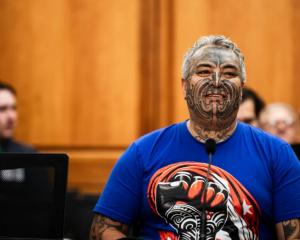
Concrete evidence has emerged that there has been an actual attempt to carry out a terrorist attack on New Zealand soil.
The security services will release no details of how the plot was foiled or when it emerged, although the system which was activated to deal with it has only been in existence for two years.
The existence of the threat came from the newly released National Security System handbook. It stated the system - which triggers a special set of protocols - had been activated for a "threat of a domestic terrorist incident".
The National Security System is New Zealand's highest-level response to the most serious threats against our country. It is led by a committee chaired by the Prime Minister and brings together key officials from intelligence services, police, the military and other departments - depending on the threat - to co-ordinate a response.
It is activated in cases where there is a risk to "the security or safety of New Zealanders or people in New Zealand", our sovereignty, the economy and environment or "the effective functioning of the community".
No further information on the nature of the threat was forthcoming from Prime Minister John Key and NZ Security Intelligence Service director Rebecca Kitteridge. The Department of Prime Minister and Cabinet, which co-ordinates responses, also would not supply details.
A spokesman for Key's office said: "As the Prime Minister has said, New Zealand is not immune from the threat of terrorism, although the threat to New Zealand remains low.
"Our intelligence agencies play an important role in identifying, monitoring and reacting to any domestic threats in order to keep New Zealanders safe, both at home and abroad.
"The Government has increased their resources to allow them to better carry out their duties as well as increased the level of transparency and oversight to ensure they are doing so appropriately."
The newly released annual report from the Inspector General of intelligence and Security, Cheryl Gwyn, said there had been one case of the NZSIS needing an urgent warrant for visual surveillance of a target or targets. She said it was the first time since a law change in late 2014 that the NZSIS had needed to urgently spy on someone without going through the legal process.
She said that the warrantless spying was followed up by a formal approach to get a warrant allowing the surveillance to continue.
The urgency of the request showed the need for information trumped the legal process, meaning it could be linked to an imminent domestic terrorist attack.
The handbook was released recently as a guide for the Prime Minister and officials who would likely be called on in the event of a significant threat to New Zealand.
It offered only one example of a reason for the activation of the National Security System, detailing how the 1080 terrorist threat was handled. The handbook says: "the threat "was considered to have the potential for significantly adverse consequences on consumer health, the economy and New Zealand's international reputation".
"The National Security System was immediately activated." The response to the threat was led by the Ministry for Primary Industries, because of its threat to the dairy industry, with police carrying out a criminal investigation. "The response included leadership by the Chief Executive DPMC and the Prime Minister."
Intelligence analyst Paul Buchanan said New Zealand's greatest vulnerability came from "self-radicalised computer jockeys" who became drawn to terrorism as a response to Isis-associated online campaigns. He said there was nothing which had been made public which would have led to a response as serious as the activation of the National Security System.
However, he said serious threats could come from a single individual. "One person with knowledge of chemistry and bad intent can do great harm."











